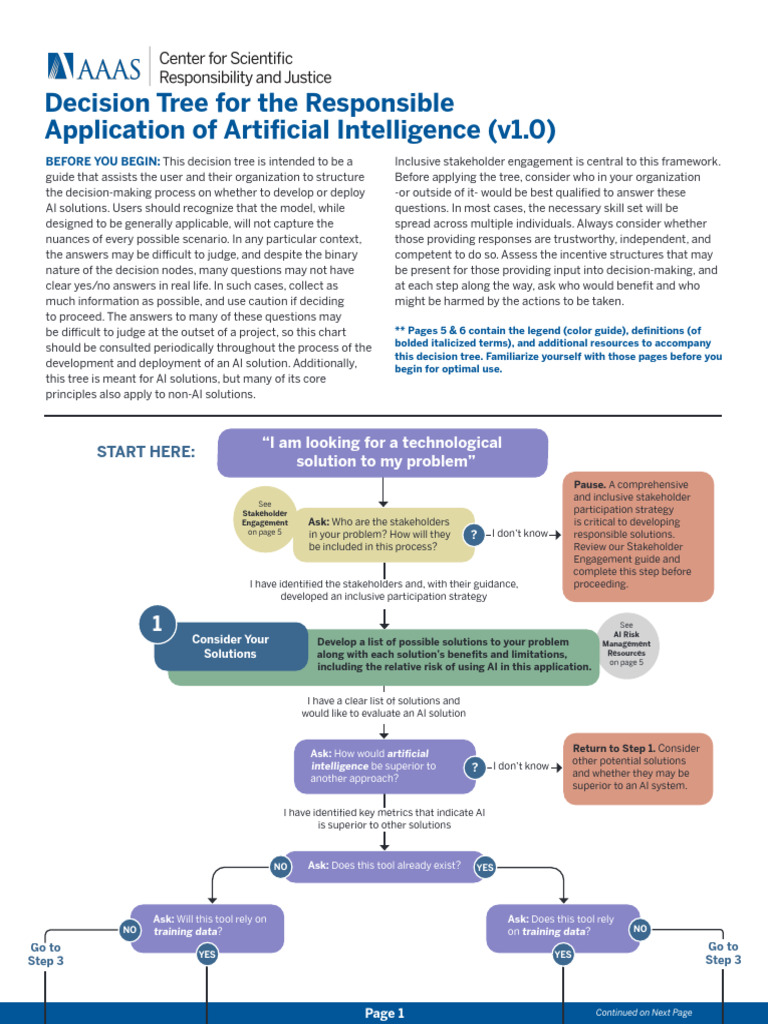Understanding AI's Learning Process: The Key To Responsible Application

Table of Contents
AI's learning process, in essence, refers to how an AI system improves its performance over time. This improvement is primarily driven by machine learning algorithms, which allow systems to learn from data without explicit programming. Understanding this process is paramount for building ethical and effective AI systems. This article aims to provide a comprehensive understanding of AI's learning process to promote its responsible application.
Types of Machine Learning in AI
AI systems primarily learn through various machine learning paradigms. Understanding these different approaches is fundamental to grasping the nuances of AI development and its potential pitfalls.
Supervised Learning
Supervised learning uses labeled data – data where inputs are paired with their corresponding outputs – to train an algorithm. The algorithm learns to map inputs to outputs, enabling it to make predictions on new, unseen data. Examples include image classification (identifying objects in images) and spam filtering (classifying emails as spam or not spam). However, its accuracy relies heavily on the quality and representativeness of the training data.
- Advantages: High prediction accuracy with sufficient labeled data. Relatively easy to understand and implement.
- Disadvantages: Requires large amounts of labeled data, which can be expensive and time-consuming to obtain. Prone to overfitting if the model is too complex.
- Common Algorithms: Linear Regression, Support Vector Machines (SVMs), Decision Trees, Random Forests, Neural Networks.
Unsupervised Learning
Unlike supervised learning, unsupervised learning utilizes unlabeled data – data without predefined outputs. The algorithm identifies patterns, structures, and relationships within the data without explicit guidance. Applications include customer segmentation (grouping customers based on their purchasing behavior) and anomaly detection (identifying unusual data points).
- Advantages: Can uncover hidden patterns in data, useful for exploratory data analysis. Doesn't require labeled data.
- Disadvantages: Interpreting results can be challenging. Performance can be difficult to evaluate objectively.
- Common Algorithms: K-means clustering, Principal Component Analysis (PCA), Hierarchical Clustering.
Reinforcement Learning
Reinforcement learning involves an agent learning to interact with an environment to maximize a reward. The agent learns through trial and error, iteratively improving its policy (a strategy for choosing actions) based on the rewards it receives. Examples include game playing (e.g., AlphaGo) and robotics (e.g., robot learning to navigate a complex environment).
- Advantages: Can solve complex problems where explicit programming is difficult. Adaptable to dynamic environments.
- Disadvantages: Can be computationally expensive and require significant training time. Requires careful design of the reward system.
- Common Algorithms: Q-learning, Deep Q-Networks (DQNs), SARSA.
The Role of Data in AI Learning
Data is the lifeblood of AI. The quality, quantity, and characteristics of the data used to train AI systems significantly influence their performance and ethical implications.
Data Bias and its Impact
Biased data, reflecting societal prejudices or skewed sampling, can lead to unfair or discriminatory outcomes from AI systems. This "algorithmic bias" can perpetuate and amplify existing inequalities.
- Examples: A facial recognition system trained primarily on images of white faces may perform poorly on images of people with darker skin tones. A loan application system trained on historical data might discriminate against certain demographic groups.
- Techniques for Mitigating Bias: Careful data collection, preprocessing techniques to rebalance datasets, algorithmic adjustments to reduce bias during training.
Data Quality and its Influence on AI Performance
Clean, accurate, and representative data is crucial for training effective AI systems. Poor data quality leads to inaccurate predictions and unreliable results.
- Methods for Improving Data Quality: Data cleaning (handling missing values, correcting errors), data preprocessing (transforming data into a suitable format), feature engineering (creating new features from existing ones).
- Challenges: Acquiring sufficient high-quality data can be expensive and time-consuming. Ensuring data accuracy and consistency is an ongoing process.
Data Privacy and Security Concerns
The use of data in AI systems raises significant privacy and security concerns. Protecting sensitive data is paramount.
- Best Practices: Data anonymization, encryption, access control mechanisms, compliance with data privacy regulations (e.g., GDPR).
- Legal Frameworks: Regulations like GDPR, CCPA, and other data protection laws dictate how personal data can be collected, processed, and used in AI systems.
Understanding and Mitigating AI Biases
Addressing bias in AI is a crucial aspect of responsible AI development. It requires careful attention at every stage of the AI lifecycle.
Identifying Bias in AI Systems
Detecting bias in AI systems requires a multi-faceted approach. Various methods can be employed to identify potential biases in algorithms and datasets.
- Techniques for Auditing AI Systems: Analyzing model outputs for disparities across different groups, examining the training data for biases, using fairness metrics to assess the model's performance across different subgroups.
- Tools for Bias Detection: Several tools and libraries are available to help detect and quantify bias in machine learning models.
Strategies for Reducing AI Bias
Mitigating bias requires a proactive and comprehensive strategy implemented throughout the AI development process.
- Preprocessing Techniques: Data augmentation, resampling, re-weighting to balance datasets.
- Algorithm Modifications: Developing algorithms that are inherently less susceptible to bias, incorporating fairness constraints into the model training process.
- Post-processing Adjustments: Adjusting model outputs to reduce disparities across different groups.
Conclusion: The Importance of Understanding AI's Learning Process for Responsible Application
Understanding AI's learning process, encompassing different machine learning types, the critical role of data quality, and the imperative to address bias, is paramount for responsible AI development. Deploying biased or poorly understood AI systems can have significant ethical and societal consequences. Understanding AI's learning process is crucial for building AI systems that are fair, accurate, and beneficial to society. Responsible application of AI requires a commitment to ethical considerations and a continuous effort to improve our understanding of how these systems learn and make decisions. Learn more about ethical AI and participate in creating a future where AI serves humanity responsibly.

Featured Posts
-
 Kham Pha Gia The Va Su Nghiep Pickleball Cua Sophia Huynh Tran
May 31, 2025
Kham Pha Gia The Va Su Nghiep Pickleball Cua Sophia Huynh Tran
May 31, 2025 -
 Recent Spain Blackout Sparks Debate Over Grid Infrastructure Responsibility
May 31, 2025
Recent Spain Blackout Sparks Debate Over Grid Infrastructure Responsibility
May 31, 2025 -
 Pope Francis To Be Honored With Giro D Italia 2025s Grand Finale In Vatican City
May 31, 2025
Pope Francis To Be Honored With Giro D Italia 2025s Grand Finale In Vatican City
May 31, 2025 -
 Dren Bio Et Sanofi Partenariat Pour Le Developpement D Un Traitement Immunologique Innovant
May 31, 2025
Dren Bio Et Sanofi Partenariat Pour Le Developpement D Un Traitement Immunologique Innovant
May 31, 2025 -
 Sanofi Et Dren Bio Accord De Rachat D Anticorps En Mars 2025
May 31, 2025
Sanofi Et Dren Bio Accord De Rachat D Anticorps En Mars 2025
May 31, 2025
